Attract More Hummingbirds to a Small Garden
Updated: Feb. 28, 2024
You're just a few plants away from hosting loads of hummingbirds! Here’s how to welcome them with even the smallest hummingbird garden.
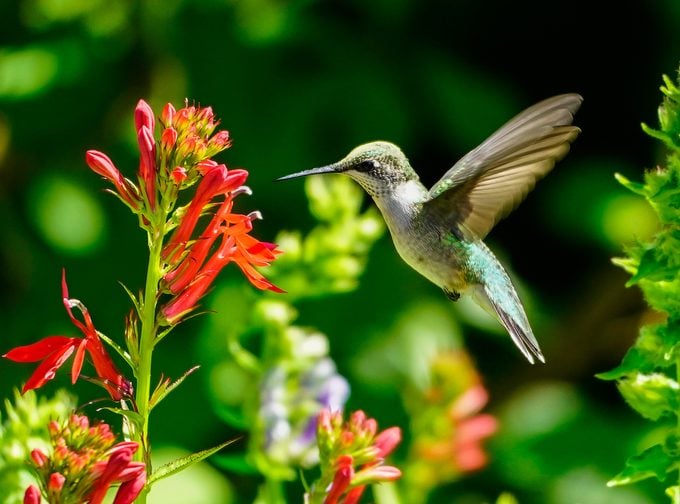
Hummingbirds are tiny but mighty—and the same can be said for some hummingbird gardens. In fact, small yards can be a gift. Unlike large spaces, it doesn’t take much effort, time or money to transform a bit of yard or patio into a hummingbird-friendly habitat.
And an added bonus: You’re more likely to have a front seat to the action when the fliers come to visit. Whether using containers or growing native plants or both, here’s how to welcome hummingbirds to a small garden.
On This Page
Use Potted Plants in a Hummingbird Garden
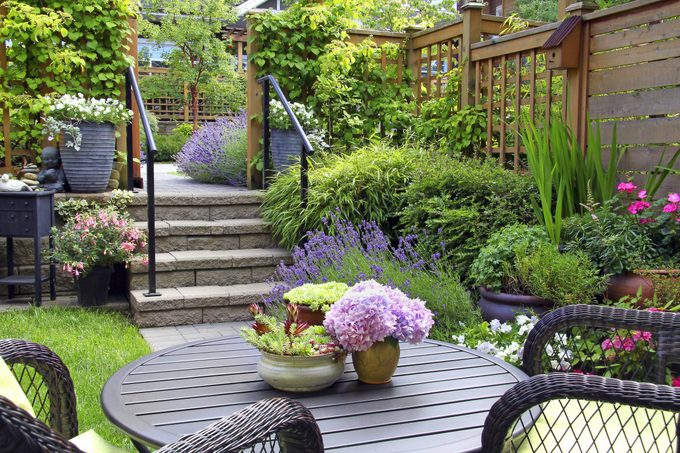
Pots and containers are excellent choices if you have concrete, paved or wooden spaces that you want to jazz up with some greenery. Flower boxes add a charming aspect to balconies, while deck boxes and tiered plant stands liven up decks and patios. Here’s a roundup of potted flowers and plants that attract hummingbirds. Even a side of your house can become a hummingbird garden when made into a “living wall.” Consider hanging baskets, too—just opt for large ones, as they accommodate bigger prolific bloomers.
Plant More Native Plants for Hummingbirds
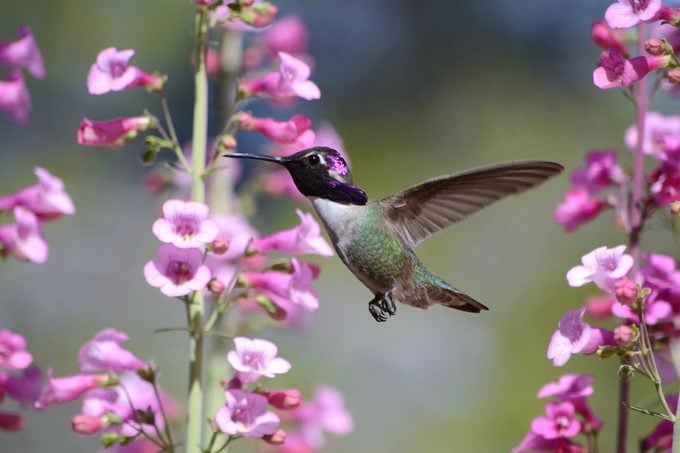
What you plant in containers can make all the difference. “A container garden is a wonderful way to provide more habitat for hummingbirds, particularly if you use native plants,” says John Rowden, the former senior director for bird-friendly communities at the National Audubon Society.
Consider adding penstemon, for starters. And don’t overlook several varieties of native columbine found across the U.S., along with cardinal flower. “The amazing thing about these plants is they’ve developed tubular blooms over time,” says John. “Hummingbirds adapted to sticking their bills into those blooms for nectar, which aids in pollination. It’s a mutually beneficial relationship.”
John notes that native plants act as fantastic hosts for native insects, too. While hummingbirds are known for their nectar needs, they also eat and feed insects to their young. “When planting native plants, you are supporting the life cycle of other species,” John says. “This helps provide an additional boost of resources for hummingbirds.”
Another popular way to attract hummingbirds to a garden of any size is with a sugar-water feeder. “Hummingbirds’ needs regarding nectar are so specific and quite regular, so they’ll always take advantage of those kinds of resources,” explains John, who notes that feeders should ideally be used in addition to native plants in a hummingbird garden to help fulfill a bird’s nutritional needs.
Grow a Vertical Hummingbird Garden
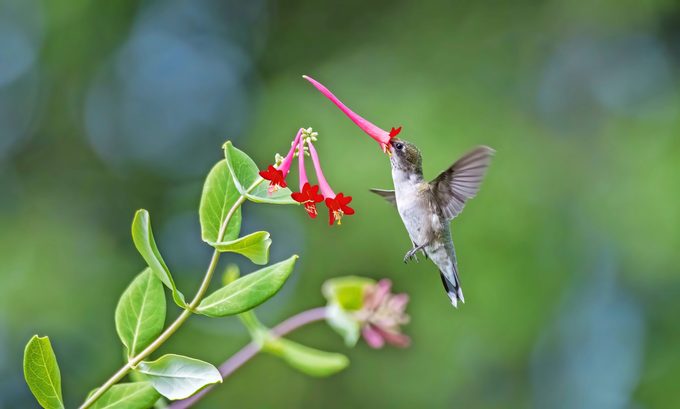
Look around a tiny yard and you may not see much real estate at first. But the options are nearly unlimited if you just think higher. Consider vining plants. Plant a purple passionflower near a pergola placed over a cafe table and chairs, which could prove to be the best seats in the house to view hummingbird activity.
Or create a privacy wall by securing lattice panels to deck railing. Then coax trumpet honeysuckle, which is another hummingbird favorite, to climb it. A pyramid trellis trained with clematis is sure to bring in birds, too, while also brightening a dull corner of the yard or patio.
Check out the top 10 vines for hummingbirds.
John reminds small-space dwellers to think deliberately about the plants they provide to hummers. “Be sure to think about the timing of flowers,” he suggests. “Consider when certain plants flower and space out the blooming cycle so the birds get those resources throughout the time period they are there.”
Add Water and Shelter for Hummingbirds
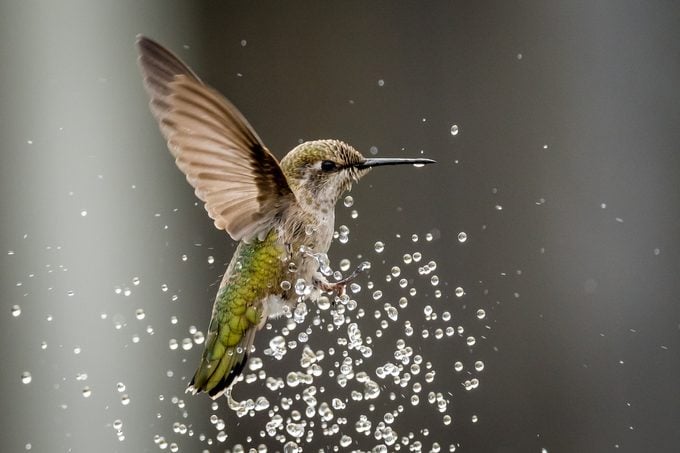
Like most other birds, hummers are skittish. While they don’t perch for long, they like places to hide as they zoom back and forth between hummingbird garden plants and feeders. Because of that, consider a small potted conifer shrub where they can have a quick rest. Many dwarf shrubs can be planted in containers.
Hummingbirds also love a water source such as a birdbath for a quick drink or to cool off in the heat of summer. Consider a mister or water feature with a fine spray (keep it off the ground or near a shrub to provide safety from predators). They love both the noise and water movement.
Our Top 15 Hummingbird Garden Plant Picks
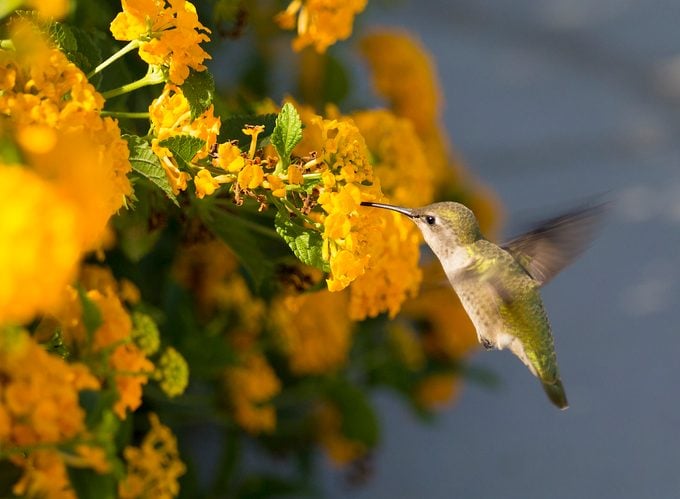
Choose the best flowers and grow a small-space hummingbird garden guaranteed to attract more of these tiny pollinators.
Native Plants for Hummingbird Gardens
- Cardinal flower
- Columbine
- Lupine
- Penstemon
- Trumpet honeysuckle
Vining Plants for Hummingbird Gardens
- Mandevilla
- Passionflower
- Pinkshell azalea
- Scarlet runner bean
- Trumpet vine
Container Plants for Hummingbird Gardens
Follow these expert tips to attract hummingbirds.
About the Expert
John Rowden has worked at the National Audubon Society since 2009. As senior director for Bird-friendly Communities from 2019 to 2022, he focused on making communities better and safer for birds, with involvement in programs such as Plants for Birds and Bird-friendly Buildings. He earned a PhD in Zoology from Duke University.
Why Trust Us
For nearly 30 years, Birds & Blooms, a Trusted Media Brand, has been inspiring readers to have a lifelong love of birding, gardening and nature. We are the #1 bird and garden magazine in North America and a trusted online resource for over 15 million outdoor enthusiasts annually. Our library of thousands of informative articles and how-tos has been written by trusted journalists and fact-checked by bird and garden experts for accuracy. In addition to our staff of experienced gardeners and bird-watchers, we hire individuals who have years of education and hands-on experience with birding, bird feeding, gardening, butterflies, bugs and more. Learn more about Birds & Blooms, our field editor program, and our submission guidelines.





















